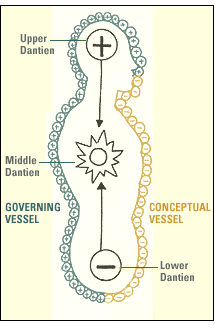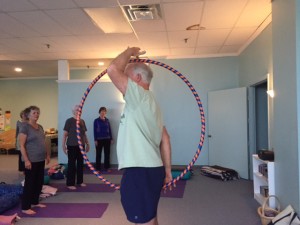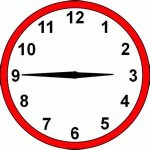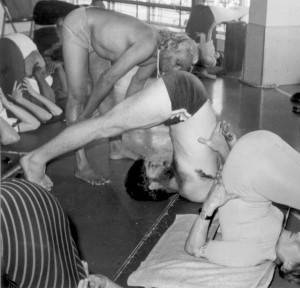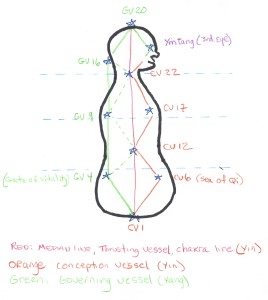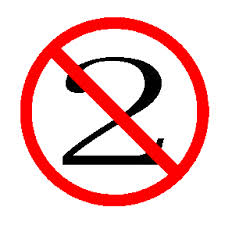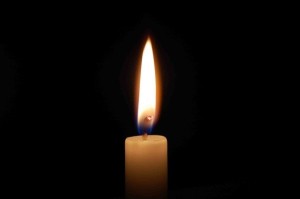A key realization of our somatic explorations, in whatever form they take, is that fascia is both connective tissue and an integrated system facilitating the flow of energy and information throughout the body. The second part sound’s a lot like the definition of mind postulated by Dan Siegel: a self-regulating process that organizes the flow of energy and information,” which is why the Taoist model of Qi flow is directly related to fascia. And remember Taoists work with verbs, processes and wholeness, not nouns, objects and duality. And please check out Jean-Clause Guimberteau’s mind boggling “Strolling under the Skin”, here on YouTube, to see the fluid component of our amazing fascial matrix. Even if you have seen this many times, it is still ….wow!
which is why the Taoist model of Qi flow is directly related to fascia. And remember Taoists work with verbs, processes and wholeness, not nouns, objects and duality. And please check out Jean-Clause Guimberteau’s mind boggling “Strolling under the Skin”, here on YouTube, to see the fluid component of our amazing fascial matrix. Even if you have seen this many times, it is still ….wow!
The fascial system, along with the circulatory and nervous systems are the three anatomical systems, that, in isolation, show the fullness of our 3-D embodiment. If we consider fascia, in addition to being structural, as an organizing and integrating aspect of embodiment, we can begin to deepen our inner sense of its 3-D presence and its crucial role in maintaining the dynamic postural relationship Patanjali calls ‘sthira sukham‘. As we discover in our seated meditation practice, this ongoing balance between stability and mobility in the tissue is directly related to the stability/mobility relationship of the ‘mind’ as a whole. And, as mentioned in the previous post, the fascia also stores trauma in the form of ‘trapped’ energy.
How can we relate our meditations on the microcosmic orbit with our embodied feel of the fascia? We see on the left the ‘thoraco-lumbar fascia’ circled, and we will come back to this soon. But first notice the yellow connective tissue running from the skull down the length of the spine to the coccyx. Imagine that line as an entry point into more and more interior expressions of the three dimensional fascial web. This is the path of the Governing Vessel, right on the median line. Also notice (or even better, feel in your own body) the large latissimus dorsii and trapezuis muscles that span the same length, and check out the region of overlap.
On the right we have the linea alba, a thick band of connective tissue running up the mid-line of the front body, from the pubis to the xyphoid process of the sternum. The connective tissue continues over the sternum and up the throat to the bottom jaw. Feel this as a tangible entry to your Conception Vessel. Notice all the branches of muscles and tendons coming together at the mid-line. Hard to see in 2 dimensions, but there are connections to three dimensions to be felt here.
Our next leap is to add the Dai Mai, or Girdle Vessel, to the Microcosmic Orbit, to bring in the horizontal 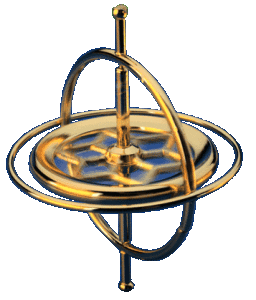 plane to our upright posture. The gyroscope gives us a great example of the first four Extraordinary (or Curious) Vessels. The central axis is the Chong Mai or ‘Penetrating Vessel’. This is the ‘blueprint or chakra line of the body and also provides ‘lift’ to the organs. (Here is a fascinating article on the Chong Mai and Non-dual medicine.)
plane to our upright posture. The gyroscope gives us a great example of the first four Extraordinary (or Curious) Vessels. The central axis is the Chong Mai or ‘Penetrating Vessel’. This is the ‘blueprint or chakra line of the body and also provides ‘lift’ to the organs. (Here is a fascinating article on the Chong Mai and Non-dual medicine.)
In our gyroscopic metaphor, the Conception and Governing Vessels create the vertical circle. (Below, they meet at the root chakra, but above, they meet at the mouth, not the crown chakra. The horizontal circle is the Girdle Vessel and this stabilizes the vertical axis in gravity (by spinning in a gyroscope.)
In the human body, we have girdling fascia and musculature which converge on the mid-lines of the front and back bodies. Patanjali has another ‘unique’ Girdling Vessel, none other than the Divine Serpent, Adhisheysa. 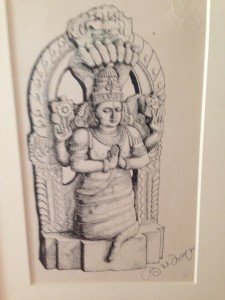 This drawing of Patanjali*, (autographed by BKS), sits above my altar where I do my sitting and I am always fascinated by his lower body support. It’s hard to see the mid line, but you can feel the support of the snake as it surrounds him.
This drawing of Patanjali*, (autographed by BKS), sits above my altar where I do my sitting and I am always fascinated by his lower body support. It’s hard to see the mid line, but you can feel the support of the snake as it surrounds him.
And I have just discovered some new information on the girdling fascia in a wonderful book entitled “Fascia: What it is, and Why it Matters”, by David Lesondak. I’m an esoteric anatomy nerd, and I have a new favorite, the ‘Lumbar Interfascial Triangle’ ak LIFT, as seen in the diagram below, from David’s book, and based on the fascial research by Frank Willard et al. (Frank was one of my favorite presenters at the First Int’l Fascial Conference in Boston in 2007, where ‘Strolling Under the Skin was first presented.)
The LIFT connects the thoracolumbar fascia (see above) with the Transversus Abdominus, the inner most of the abdominal layers running parallel to Adhishesa. This is a fulcrum region, balancing both front and back, vertebral segment by vertebral segment, but also balances the horizontal force of the transversus abdominus with the vertical fibers of the quadratus and erector spinae muscles. Find the LIFT in your practice.
When you find the energetic field in the body that supports the fascia that engages this 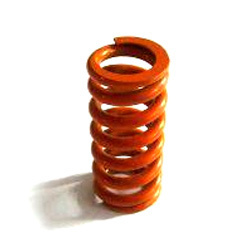 balance of vertical and horizontal, you begin to feel like a coiled spring. Because we are even more complex, there is actually a right coil and left coil, a spiral right and spiral left the wrap around each other. This is of course symbolized by the caduceus of
balance of vertical and horizontal, you begin to feel like a coiled spring. Because we are even more complex, there is actually a right coil and left coil, a spiral right and spiral left the wrap around each other. This is of course symbolized by the caduceus of  Hermes, with the bonus of extended wings. We are going to keep our wings into the body for the time being as we return to our sitting practice.
Hermes, with the bonus of extended wings. We are going to keep our wings into the body for the time being as we return to our sitting practice.
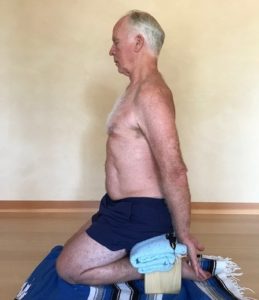 I have been experimenting with my hands and arms behind for extended periods of time me while sitting. Sometimes separate, sometimes interlocked. It seems to work better with my elevated virasana, (all my knees and hips will allow at the moment.) With the slight height to the pelvis, I have more room for my arms. This engages the latissimus and traps and allows me to engage my deep abdominals. With help from the Lumbar Interfacial Triangle, this action widens the spinal column from the inner back body.
I have been experimenting with my hands and arms behind for extended periods of time me while sitting. Sometimes separate, sometimes interlocked. It seems to work better with my elevated virasana, (all my knees and hips will allow at the moment.) With the slight height to the pelvis, I have more room for my arms. This engages the latissimus and traps and allows me to engage my deep abdominals. With help from the Lumbar Interfacial Triangle, this action widens the spinal column from the inner back body.
The deep abdominals do not contract in isolation, but maintain a vibrant and integrating tone through the pelvic floor and into the lower back fascia, and hopefully throughout the whole body. The LIFT is very helpful here. The pose is a bit more ‘yang’ than with the arms and hands forward and the pelvis elevated, but because there is an engagement of the front body ‘yin’ through the lift, the yang stays internal, is integrated and not distracting.
If you feel your way around inside you may find the coils easier to find down below and more challenging in the area just below the sternum, right at the middle burner and kidneys. Use your imagination to fill in the field of coiling expanding energy so the whole abdominal/pelvic area, from the diaphragm to the pelvic floor, feels balanced in energy and tone.
Up inside the upper ribs and the sternum are the transversus thoracis muscles. They continue analogous to the transversus abdominals, and then begin to veer diagonally. Use them to lift and open the sternal area by engaging them opposite to the t.a., that is away from the midline. This will help keep the the kidney region of the back body relaxed and dropping, along with the inner shoulder blades. We habitually use the kidney area to hold ourselves upright, leading to a blockage in the Governing Vessel and tension in the spine, so this is a good antidote. Now feel how the diaphragm has more room to move, especially the center dome rising up to lift the heart.
On the outside of the sternum you can fine the continuation of the rectus abdominus fascia travelling up to the back of the skull, as shown as part of Tom Myer’s ‘Superficial Front Line’. Here, the back of the skull can release up as the kidneys drop down. Feel the sternum bone floating between the fascial tissues in front and behind and connect the tail of the sternum, the xyphoid process, with tail of the spine, the coccyx, in both directions. This will open and stabilize the connection between CV-1, the seat of the yin, and GV-1.
Release the open coiling feeling up through the neck/throat to the base of the skull, relax the skull bones and soften the crown chakra. When I sit in sukhasana, my other pose of choice, my pelvis is lower and there is not the same feeling, but as I go back and forth, each position informs the other. And in the deep background, the ever-present ‘Awareness’, your drashtuh svarupe, awaits your surrender. As the body stabilizes in an effortless (relatively) vibrancy, just enjoy the Being’ and stabilize your presence there.
And all of this carries over into all of your poses, all of your postures, all of your movements, all of your life. Enjoy the ride. Not always fun, but always moving into deeper and deeper clarity and awakening.


